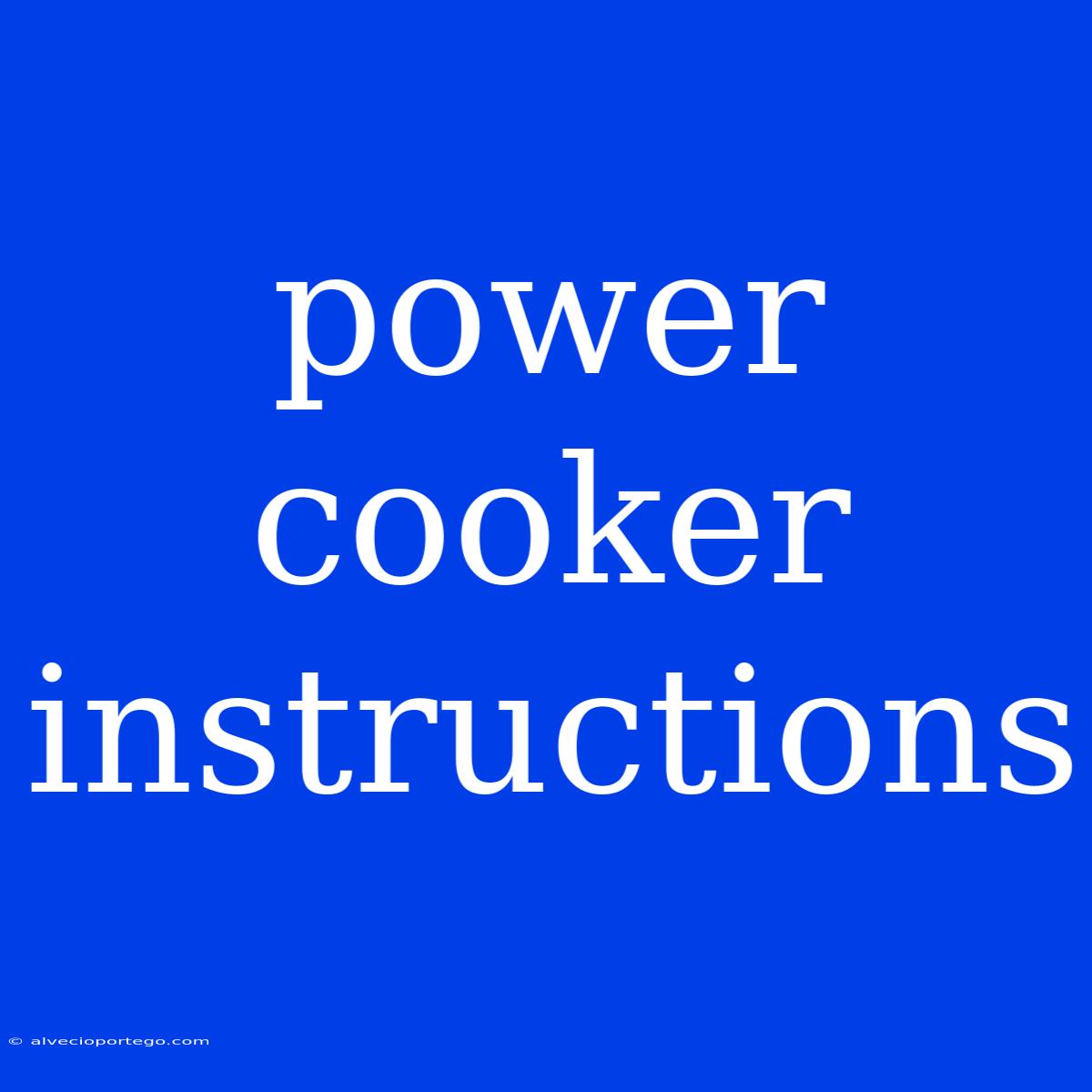Mastering the Power Cooker: A Guide to Delicious and Easy Meals
Power cookers, also known as pressure cookers, are a kitchen essential for busy individuals and anyone looking to whip up delicious meals in a fraction of the time. While they might seem intimidating at first, understanding the basic instructions will open up a world of culinary possibilities. Here's a guide to using your power cooker like a pro:
Getting Started
- Choose the Right Pot: Power cookers come in various sizes, so choose one that suits your needs and the size of your household.
- Read the Manual: Every power cooker comes with a user manual containing specific instructions and safety tips. Always read it carefully before operating your device.
- Prepare the Ingredients: Properly prepping your ingredients will enhance the cooking process and ensure your food cooks evenly. Chop vegetables, cut meat into smaller pieces, and make sure everything is ready to go before you start cooking.
Key Components and Functions
1. Pressure Cooker Pot: This is the main vessel where you cook your food. 2. Lid: The lid creates a seal, trapping steam inside the pot and building pressure. Most lids include a pressure valve and a safety valve. 3. Pressure Valve: This valve regulates the pressure inside the pot. It typically has two positions: "Sealing" to build pressure and "Venting" to release pressure. 4. Safety Valve: This valve acts as a backup mechanism to release excess pressure in case the primary pressure valve malfunctions. 5. Heating Element: This element is responsible for heating the pot and creating the steam needed for pressure cooking.
Essential Tips
- Use Enough Liquid: The liquid in your pot helps generate steam and prevents the food from burning. Check the manual for the minimum liquid requirement for your specific model.
- Don't Overfill: The pot should never be filled beyond the maximum fill line marked on the inside. Overfilling can lead to pressure buildup and potential accidents.
- Release Pressure Safely: After cooking, always use the appropriate method to release pressure. Some power cookers have a quick-release feature, while others require a natural pressure release.
- Monitor Cooking Time: The cooking times for power cookers are generally much shorter than traditional cooking methods. Carefully follow the recipes or adjust cooking times based on your personal preference.
Cleaning and Maintenance
- Cool Down: Before cleaning, allow the pot to cool down completely.
- Hand Wash: Most power cookers are not dishwasher safe. Hand-wash them with mild soap and water.
- Clean the Valve: Regularly clean the pressure valve and safety valve to prevent clogging.
- Inspect the Seal: Ensure the sealing ring is in good condition and free of any damage.
Safety First
Remember that power cookers operate under high pressure. Always follow these safety precautions:
- Never leave the power cooker unattended while in use.
- Never open the lid while the pressure is still building.
- Never use the power cooker on a stovetop or any other heat source other than its intended base.
- Always store the power cooker in a safe place, out of reach of children.
Exploring the World of Pressure Cooking
Power cookers are incredibly versatile. They can be used for a wide variety of recipes, including:
- Casseroles and Stews: Pressure cookers excel at creating flavorful and tender stews and casseroles in a fraction of the time.
- Beans and Legumes: Pressure cooking dramatically reduces the time needed to cook beans, lentils, and other legumes, making them a quick and convenient option.
- Meat: Pressure cookers break down tough cuts of meat quickly and easily, making them ideal for roasts, ribs, and even chicken.
- Rice and Grains: Pressure cookers cook rice and grains perfectly every time, yielding fluffy and delicious results.
- Vegetables: Pressure cookers are great for preserving the nutrients and vibrant color of vegetables, while also cooking them quickly.
With a little practice and experimentation, you'll be amazed by the ease and deliciousness that power cooking can bring to your kitchen. Enjoy exploring the possibilities and unlocking a world of culinary creativity!

